Kundalini” is the energy of the desire to meet God or to understand man’s purpose on earth.
In the process of Realization, Kundalini awakens as soon as we ask for pure knowledge, that is, knowledge of our true nature, which is that of the subtle system
The subtle system is made up of the Kundalini, which is the residue of cosmic energy, the three main energy channels or nadis and the seven main chakras.
The word “Kundalini” is the feminine form of the Sanskrit word “Kundal”, meaning “ring” or “spiral”.
This is because it is coiled in three-and-a-half coils in the sacrum bone. The word ‘sacrum’ is a Greek word meaning ‘sacred’.
Kundalini energy resides in every human being, but it’s dormant. We are not aware of its existence, even though it takes care of us.
Its nature is protective, like that of a mother with her child. She is waiting for the right moment to give her only child its second birth, that is, the Self-realization.
THE ENTRANCE OF KUNDALINI
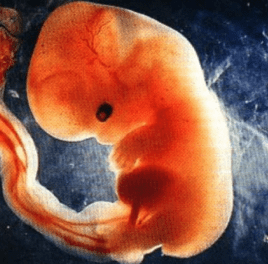
The cosmic energy Adi Shakti enters through the top of the brain and settles in the human being in the form of three Powers.
When the foetus is two to three months old in the womb, the beam of cosmic energy rays enters the body through the fontanelle bone.
As the brain is shaped like a prism, some of these cosmic rays travel to the left and right, forming the lateral channels of the subtle system. Another part of the rays descends to the lowest level and corresponds to the Shri Mahakali or Shri Gauri power.
After leaving a thread-like trace in the medulla oblongata, Shri Gauri settles in the sacrum and coils into three-and-a-half turns. This is what we call Kundalini energy
KUNDALINI IN WITHIN
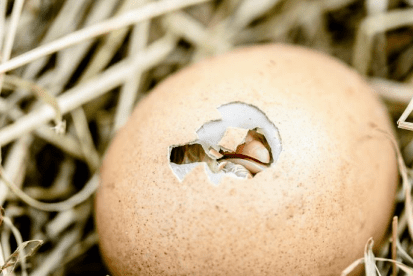
Around the age of two, the right and left channels, which lead to the ego and superego respectively, begin to cover the brain: around the age of five, the being is cut off from the omnipresent energy, like an egg in its shell.
Realisation is like a second birth, like the chick coming out of its shell. The image stops there, because the process is gentle: the Kundalini pierces the fontanelle bone area at the top of the head and reconnects us to the omnipresent cosmic energy.
Sahaja Yoga meditation then helps us to gradually ‘deflate’ these outgrowths and maintain this connection with the energy of the whole.
NATURE OF KUNDALINI
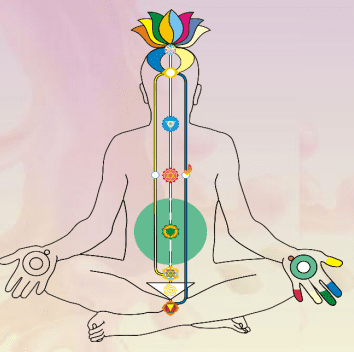
Kundalini is the residual manifestation of the primordial cosmic energy called Adi Shakti. It is also said that the Kundalini is the reflection within us of this primordial maternal energy.
The Adi Shakti, the primordial Mother, divided herself into three powers, Mahakali, Mahasarasvati and Mahalakshmi, at the moment the universe was created.
Adi Shakti is ‘one’ but also three if we consider her in terms of her actions. So it is Adi Shakti as Mahakali that is of the same nature as Kundalini.
Kundalini is depicted in the ancient Indian Scriptures and also in the religious books of the Torah, the Bible and the Koran, where it is described as the tree of fire.
In ancient times, this knowledge of Kundalini existed in India but remained unknown to the masses. Kundalini was the knowledge of very, very few people
However, the sacred Scriptures contained numerous references formulated in a poetic language that was difficult to understand.
SYMBOLS OF KUNDALINI
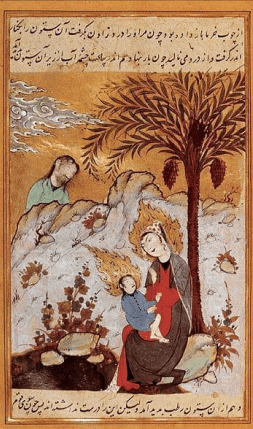
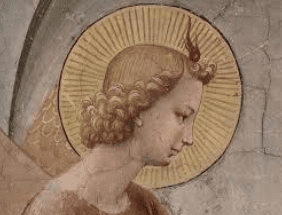
Fra Angelico
Kundalini is represented by a golden aura above the heads of saints, as in this 17th-century Persian miniature of Jesus and Mary
Or in this 16th-century painting by Fra Angelico
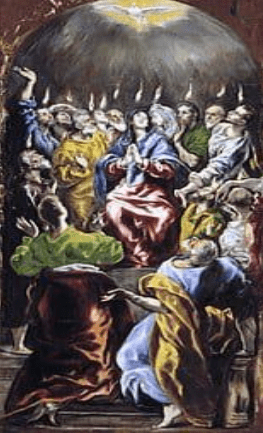
The Bible tells of the first meeting after the crucifixion between the disciples and the Virgin Mary. The room in which they met was closed but, “It was filled with a great wind and there appeared above their heads tongues, like tongues of fire, separated from one another, and they were filled with the Holy
Spirit.”
These burning and silent flames that do not burn are a description of Kundalini.

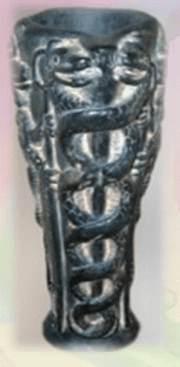
One of the most important symbols is the snake
In ancient Greece, the goddess Athena held the Kundalini in her hand because she was a representation of the primordial goddess Adi Shakti.
In Sanskrit, ‘atha’ means ‘primordial’.
Athena was the primordial Mother who is found in us as Kundalini, whose form is that of a snake coiled in the sacrum.
The Chakana
The Chakana or Andean cross has the shape of a square, stepped cross, with twelve points. Chacanas are found throughout the Andes, from Ecuador to Argentina. The first Andean cross dates from around 5000
years ago
The word Chakana is of Quechua origin, as it is a symbol widely used by the Inca culture and inherited from previous cultures. It refers to the concept of a ‘bridge’ or ‘staircase’ that connects two worlds. The symbol is a four-sided ladder.
The hole in the center of the Chakana symbolizes our unity with the universe and our connection with Heaven and Earth. Notice that it is the same symbol of Kundalini coiled into 3 and a half coils.

Kebechet is a goddess of Egyptian mythology represented by a serpent. Her name means ‘fresh water’. (Here it is in hieroglyphics).
She is the goddess of freshness and purifying libation. She would be the daughter of the god Ra, solar god of Egyptian mythology, creator of the universe.
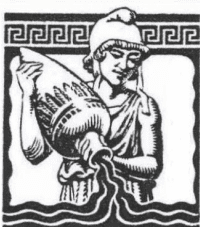
In astrology, the jug which contains water is one of the symbols of Kundalini. Kundalini has often been described as an energy that flows like water once awakened and having pierced the fontanel.
The image of the water bearer, the Aquarius, who pours out his water, carries a jug which represents the Kundalini. It comes out of its home, the sacrum, and flows in vibrations on the head of the one who obtains his Realization.
The KUMBHA
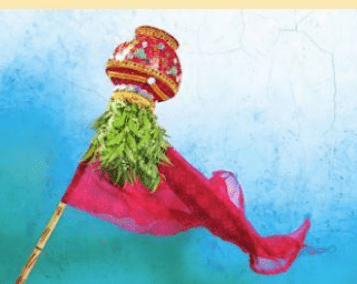
In several parts of India, especially in Maharashtra, New Year’s Day is special and is called ‘Gudi Padwa’. To celebrate this new year, the Indians put at the end of a stick a small flag and a small jug, which we call kumbha, whose particular shape represents the Kundalini.
The Shalivahanas kings, who are the ancestors of Shri Mataji, were devotees of the Goddess. It is said that they gave him a shawl as a present. Initially, they were called Sat-Vahanas´ because they knew the seven chakras. Then this name Sat-vahana´ was later transformed into `Shalivahana´, then Salve, the family name of Shri Mataji.
The symbol of the Shalivahanas was then a ‘gudi’, this flag which represents the shawl offered to the Goddess, at the end of which was placed a small jug which represents the Kundalini. The Shalivahanas wanted to welcome the Kundalini in this way. So they started their new year with these symbols.
MANTRAS FOR THE KUNDALINI

Central aspect, home of the Kundalini, outside the chakra
“Mother, you are in me the pure desire to be united with the Divine”
“Mother, you are the Immaculate Virgin, the mother of everyone”
Om twamewa sakshat SHRI GAURI sakshat Shri Adi Shakti Mataji Shri Nirmala Devi Namoh Namaha
“Mother, you are the eternal energy and the foundation of my subtle body”
“Mother, please help me cleanse my subtle body”
Om twamewa sakshat SHRI KUNDALINI MATA sakshat Shri Adi Shakti Mataji Shri Nirmala Devi Namoh Namaha







